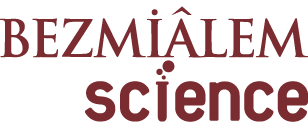ÖZET
Amaç:
Çalışmada kan kültürlerinden izole edilen Candida suşlarında yeşil çay (Camellia sinensis) ve ayva yaprağı (Cydonia oblonga) ekstraktları ile flukonazolün in vitro etkinliği araştırılmıştır.
Yöntemler:
Çalışmaya 50 Candida spp. dahil edildi. Rize ve Erzurum/Tortum bölgerinden toplanmış Camellia sinensis ve Cydonia oblonga yaprakları eksrakt olarak hazırlandı. Daha sonra üretici firmadan elde edilen flukonazol toz etken maddesi ile hazırlanan ekstraktlarından CLSI M27 A3 önerileri doğrultusunda Broth Mikrodilüsyon (BMD) yönteminde kullanılmak üzere stok solüsyonlar hazırlandı. BMD yönteminden elde edilen flukonazol MİK değerleri CLSI M27 A4 sınır değerlerine göre değerlendirilirken Camellia sinensis ve Cydonia oblonga için elde edilen MİK değerleri literatürde sınır değerler bulunmadığından flukonazol sınır değerlerine göre yorumlandı.
Bulgular:
Çalışmaya dahil edilen 50 Candida spp.’nin 37’si (%74) C. albicans iken 13’ü (%26) non-albicans idi. Non-albicans türleri içerisinde en sık izole edilen tür C.parapsilosis idi (%14). Flukonazol için MIC50 ve MIC90 sırasıyla 0,125 μg/mL- 0,25 μg/mL iken, aynı değerler Camellia sinensis için 0,125μg/mL-64 μg/mL; Cydonia oblonga için 0,125 μg/mL-0,125 μg/mL olarak tespit edildi.
Sonuç:
Elde edilen düşük bir MİK değeri dikkate alındığında yeşil çay ve ayva yaprağının invazif Candida enfeksiyonlarının tedavisinde alternatif olarak kullanılabileceği düşünülmüştür.



